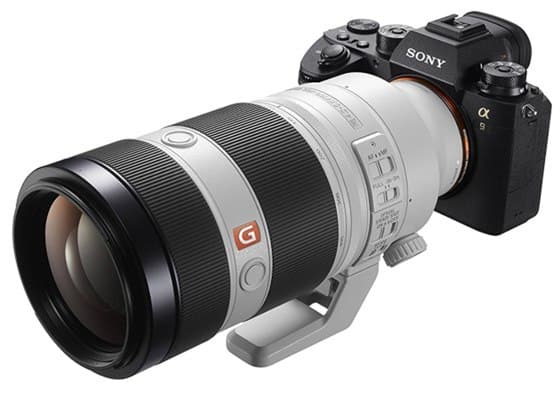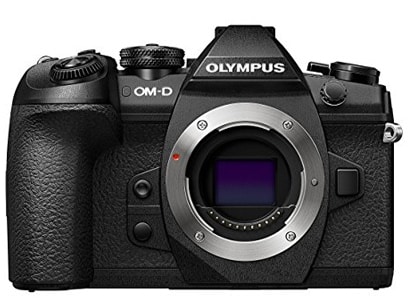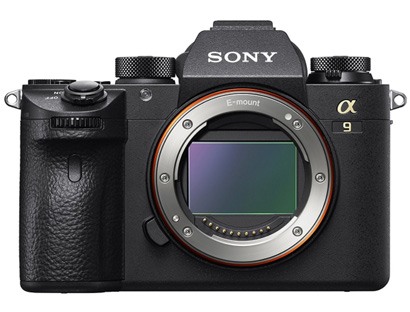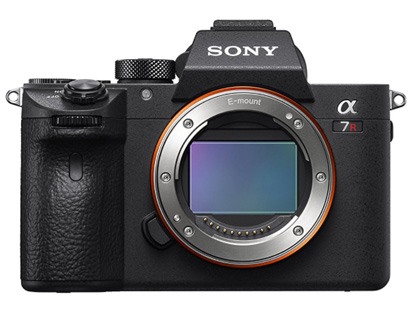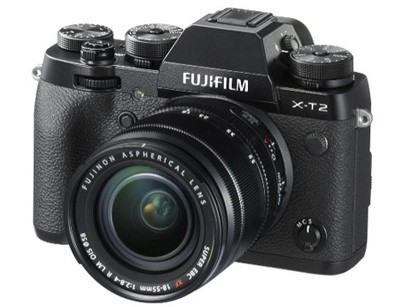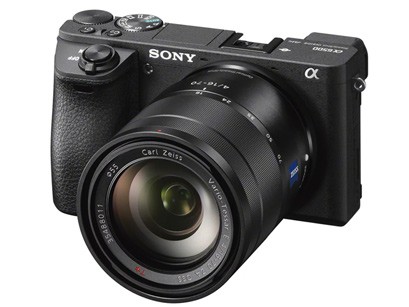Selecting a Proven Mirrorless Camera for Sports and Action
Sports photography is a challenge for any camera system. Not long ago you’d be hard pressed finding a mirrorless camera that could keep up with the demands for sports and action photography. These cameras have been in the marker for a little while now and are proven cameras, even if they don’t have all the latest tech & price of newer cameras.
You’re following fast moving subjects, sometimes in low light, while still trying to have a fast enough shutter speed to make the photograph look sharp. You also need to be close to the action, or have a good telephoto lens that allows you to zoom so close.
A few years ago, it was tougher shooting sports and action with mirrorless cameras, but nowadays we have many exciting models with Auto Focus systems that are absolutely stunning! This includes brands such as Sony, Olympus and Fujifilm.
In this guide, we went through all of their cameras and selected the 6 best models that give you the most for the price and can be used for all sorts of sports.
6 Best Mirrorless Cameras for Sports and Action
We discuss all of these cameras below, but first let’s go through what makes a camera good for sports photography.
If you decide to buy anything after clicking on our Amazon links, you automatically support us. It’s what allows us to write guides such as this one.
What’s Important for Sports Photography?
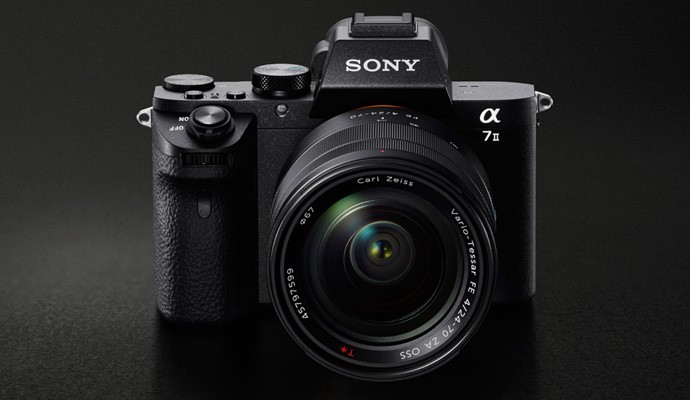
Auto Focus – You want as many AF points as possible, and spread out across the viewfinder. Anything with more than 50 is great. Keep in mind that phase type AF points are more accurate than contrast type points when it comes to shooting action. It’s good having a combination of both, which we commonly see in mirrorless cameras.
Frames per Second – Many mirrorless cameras can shoot well over 8fps, some even much higher than that. The more shots per second, the better your chances you have of getting high quality photographs.
Buffer – Buffer size lets you know how many pictures you can take before the camera needs to “re-charge” and let you do it again; aka, how long you have to wait before taking pictures again. This is real simple math; if the buffer for, let’s say JPEG files is 150, and your camera takes 10 pictures per second, you can continuously shoot for 15 seconds. This may not sound like a lot, but in 99% situations, most people never go above ~2-3 seconds.
Body Design – The camera needs to be comfortable and have useful buttons accessible without fiddling through the menus. You also want the camera to be environmentally sealed in case of water or other difficult weather conditions (sand, dust, etc.). All cameras on our list are environmentally sealed, so nothing to worry about here.
Battery Life – Seeing as mirrorless cameras use a lot more power, their battery life isn’t as long as with DSLRs. Still, while the majority state they last up to ~350 shots, you can expect twice as long life in actual use. Don’t forget to bring a few extra batteries though!
Sensor Size – We have 3 different types of sensors in mirrorless cameras. The first, biggest, are Full Frame sensors. Second are APS-C, while the smallest ones are called Micro Four Thirds. While you don’t have to worry too much about this, it helps knowing that there’s this thing called crop factor. If you put a 100mm lens on a full frame (FF) camera, the field of view stays the same. If you put that same 100mm lens on an APS-C camera that has a 1.5x crop factor, it now suddenly appears much longer; it’s identical to a 150mm lens on a FF camera (100mm x 1.5 = 150mm). Micro Four Thirds sensors are even smaller, and therefore have a 2x crop factor, literally doubling your focal length equivalent. Nothing happens to your camera or lens, it’s simply due to the difference in sensor size.
If you’re confused, just remember:
- 1. Full Frame Sensor (Sony only = no crop factor)
- 2. APS-C Sensor (Sony, Canon and Fujifilm = multiply the lens number by 1.5x)
- 3. MFT Sensor (Olympus and Panasonic = multiply the lens number by 2x)
Memory Cards – Most mirrorless cameras use SD cards. If your camera’s memory card slot supports UHS-II speed, this means you can get much faster writing and reading speeds compared to UHS-I, which is what the majority of cameras have today. UHS-II means less waiting times for each photograph to be written onto the card and can make a difference in sports or other types of action. Imagine having to wait a few seconds after every shot… luckily, this is not the case nowadays, at least not if you have a memory card from a quality brand (Sandisk, Kingston, Sony etc.).
1. Olympus OM-D E-M1 II
The Olympus E-M1 II is the most advanced Olympus up to date. Unlike Fuji and Sony, Olympus uses Micro Four Third (MFT) sensors in their mirrorless cameras. Instead of a 1.5x crop factor, it’s 2x, so any lens you mount has a field of view that’s twice as long as if you would mount it on a full frame camera.
Is that a big deal? No, because there are a lot of ultra wide angle lenses for MFT to compensate for that, and you’ll actually appreciate the longer crop factor when shooting wildlife and sports.
Onto the E-M1 II. The camera has a new 20.4MP sensor and weighs a mere 20.2 oz (574g) with the battery. A big reason for the small weight and size is because of the smaller sensor. The E-M1 II is weather-sealed and up to standards of any nature photographer, so no need to hide when it starts, snowing or when the temperature drops.
What we really love about Olympus is their in-camera image stabilization (up to 5.5 stops). It makes the E-M1 II a much better choice for shooting on the go compared to cameras without it, simply because you don’t need to carry a tripod or raise the ISO when shooting in low light situations. Naturally a tripod is always the best choice for sharp results, but the built-in IS is something we all want in a camera. It works very well for video too, otherwise your footage may look shaky if you don’t have any support.
Speaking about video, it offers DCI 4K at 24p, a headphone and microphone jacks and of course the built-in 5-axis stabilization. Unfortunately Full HD video looks soft, so if you’re going to record, do it in UHD 4K for maximum sharpness.
The ISO range goes from 100 to 25,600 but can expend down to 64. Image quality at 6,400 is still quite good, and the shots look usable. Go over and you’ll see the limitations of a small sensor for noise performance, so stick to levels below that. For sports photography, it manages to shoot an impressive 18fps with a JPEG buffer of 118 shots (102 for RAW). It’s faster than others on this list because it has a smaller sensor.
It has a 3.0″ touch screen LCD that can fully tilt and swivel, making it easier to shoot in difficult positions (subjects way below or above you). Battery life is also impressive with 440 shots. Not only that, the battery recharges 50% faster than the previous model.
Why is it good for sports?
The E-M1 II has a MFT sensor, so any lens you put on essentially acts as if its 2x longer. This is great for sports and wildlife, where you can almost never be too close! The camera is relatively small and light, and is fully weather-sealed so you can safely shoot in any condition. Auto focus performance is great, especially for a MFT camera. Olympus also offers plenty of telephoto lenses.
It has a 20MP sensor, built-in stabilization that helps up to 5.5 stops, 15 frames per second or 60fps with the electronic shutter. Buffer is not as big as Sony’s cameras though, with 51 JPEG or RAW shots.
You can buy it at Amazon or see more reviews here.
2. Sony A9
The Sony A9 is one of the most exciting cameras on the market right now, for a very good reason. It’s very similar to the A7R III in the sense that it can do it all.
The A9 has a 24.2 megapixel full frame sensor with ISO up to 204,800. Because of the lower resolution, the A9 shows less noise at high ISO compared to the A7R III.
It can shoot 20 frames per second! That’s crazy fast, which is why this Sony is ideal for sports, wildlife and any other type of action. To top it of, the A9’s fastest shutter speed is 1/32000. All this speed wouldn’t matter if the buffer would be small, but it’s the opposite. You can take up to 362 JPEGs or 241 RAW files before the buffer empties, so make sure to get a really good memory card.
One other feature where the A9 is unique is its auto focusing system. There are 693 phase-detection AF points and they cover 93% of the viewfinder, meaning you expect accuracy in center and corners.
The rest is very similar to the A7R III. There are 2 x SD memory card slots, an AF joystick for focus point selection, 4K video recording, an articulating 3.2″ LCD touch screen, big battery life up to 650 shots and environmental sealing.
The Sony A9 is an amazing camera if you’re looking for the best combination of speed, pixels, quality and video features. It’s best suited for photographing any type of movement, but you can also use it for portraits, weddings, landscape and so on. It’s not the cheapest out there, so it depends on how serious you are about photography.
Why is it good for sports?
If it wasn’t so expensive, the A9 would be number one our list. It’s got everything you’d want in a camera ready for wildlife, birds, sports etc. The 24MP sensor delivers great shots, you can capture 20 frames per second, and the AF system has 693 phase-detect points along with an AF joystick to easily select your single focus/group point. There is no blackout on the LCD screen when taking pictures, something common with other cameras (let alone DSLR cameras). Because of its electronic shutter, you can shoot up to 1/32000.
The A9 also has 2 x SD slots with 1 supporting UHS-II. One of the biggest advantages compared is its battery life; average 650 per charge. Since this is usually twice as long in actual use, the A9 is better than even some DSLR cameras.
You can buy it at Amazon or see more reviews here.
3. Sony A7R III
The Sony A7R III is a camera that delivers in every department.
First, it’s got a 42.2MP sensor, just like its predecessor. However, the A7R III has an improved image processor, which makes this 42 megapixel sensor perform better in low light (maximum ISO of 102,400). With such a high resolution, the entire Sony A7R line continues to be a perfect choice for landscape, studio, commercial and portrait photography.
Second, the A7R III can shoot 10 frames per second. That’s blazing fast, especially for a camera with so many megapixels. Many other models can’t come close, even with less pixels, although this is a benefit of the mirrorless technology. Because of the 10 frames per second, you can use it for sports, action and wildlife, and expect a lot of different shots to choose from.
These 2 improvements alone would be worth the higher price tag, but there are a lot more features to the camera. It’s got 425 vs 399 contrast AF points and focuses a lot faster, especially in low light. The built-in 5-axis image stabilization has been improved and now helps up to 5.5 stops, instead of 4.5. As you can see, the A7R II is great, but the new model is even better.
If you want to record videos, you’ll be happy to know that the A7R III can comfortably record 4K at 30fps and 1080p at 120fps. Because of the new image processor, videos shot at higher ISO should look better now. One excellent addition is the touch screen capability that allows you to focus/operate the camera simply by pressing anywhere on the screen. This is slowly becoming a standard for all cameras, regardless of their price.
For transferring images, the Sony A7R III finally has a USB 3.0 port. When a camera has 42MP, the files it creates are huge, so you’ll really want fast transferring in this case. Speaking about files, it now features 2 x SD memory card slots (one supports UHS-II speeds). To top it of, you’ve also got an AF joystick on the back of the camera so you can choose your focus point/group quicker, while the battery lasts up to 650 shots compared to 390.
To sum up, the A7R III is not the cheapest camera, but if you’re looking for the absolute best in almost every department, you will love it, especially if high megapixel count is important.
Why is it good for sports?
Having 42 megapixels means you can crop the heck out of every photograph without sacrificing image quality. With 10 frames per second and an even improved AF system, the A7R III is ready for even the toughest sport. Built-in stabilization also helps tremendously, but only if your subject is not moving, or you are recording movies.
Buffer wise, the JPEG buffer is 82 shots, while RAW up to 30 shots. Nothing special, but considering the sensor has 42MP it’s not that bad. It has 2 x SD card slots, one of which fully supports UHS-II. It can’t shoot 20fps like the A9, but 10fps is more than enough for most people.
You can buy it at Amazon or see more reviews here.
4. Fujifilm X-T2
The Fujifilm X-T2 is our favorite mirrorless camera from Fuji.
Released in 2016 and replacing the famous X-T1, it sure does bring a lot of exciting improvements. While the X-T1 is still an awesome camera with great quality, the newer model is faster at pretty much everything.
First, the resolution got a big increase, from 16 to 24MP. If you mostly share your photographs online, then the extra 8MP won’t really make a big difference. However, for cropping, printing large and still retaining plenty of details, extra 8 million pixels is a ton more information. Again, this is subjective and depends on where your photographs are displayed.
Image quality is absolutely fantastic. Colors and contrast look wonderful and you’ll love shooting in JPEG. Dynamic range is also really impressive for an APS-C camera, so hats off to Fuji. Pair the camera with any of the great Fuji’s X lenses and you’ve got a great combination for just about anything, from portraits, events, to street and sports photography.
Sports? Yes, if the X-T1’s AF performance was not that good to you, the new X-T2 definitely delivers. It boasts a 325 AF point system, with 169 of those phase-detection for improved speed. The body even has an AF point selection joystick to focus on the point you want quicker (similar to more advanced DSLRs). Simply put, the old X-T1’s priority was still images (based on the AF speed). Now, you’ve got that + action photography covered.
The Fujifilm X-T2 has also been improved for video use; it records 4K videos at 24p, has a microphone jack and allows you to choose the F-log profile. Auto focus accuracy and speed during recording are okay, but sometimes you’ll be better off doing it manually. Check out some beautiful X-T2 4K footage on Youtube.
For storing your files, you had 1 x SD slot on the X-T1. Now, you’ve got 2 x SD slots, and the first one supports UHS-II for faster writing and reading with the latest memory cards. Should you decide to use the USB, it’s now USB 3.0 vs 2.0, something we miss seeing on many newer cameras. For sharing your shots, it’s got the same Wi-Fi functionality but no NFC.
With all the exciting new features that need quite a lot of processing power, the X-T2 still manages to shoot up to 350 shots before the battery empties. That’s only 10 less than on its predecessor. The body size and weight have also increased, but by nothing drastic (from 27.2 oz (771g) to 28.8 oz (817g)). The 3.0″ LCD screen offers the same resolution and no touchscreen, so no improvements here.
Why is it good for sports?
The Fujifilm X-T2’s auto focus speed and accuracy are excellent. It’s got 325 AF points, shoots 8fps and has 2 x SD card slots that both support UHS-II. Technically speaking, it can shoot at 11fps with a battery grip, or even 14fps, but only by changing the shutter to electronic, which could introduce unwanted effects on moving subjects.
The X-T2 is also an APS-C sensor sized camera, so you can expect to get closer to your subject by using the same focal length, compared to Sony’s full frame.
You can buy it at Amazon or see more reviews here.
5. Sony A6500
The announcement of the Sony A6500 was quite a surprise. We expected the camera of course, but not so soon as it came out only a few months after the A6300 was released.
It uses the same 24.2MP APS-C sensor so image quality, colors, dynamic range and noise are all identical. The amazing 425 phase-detection AF point system is still as fast as ever.
The 3 biggest improvements are:
- 5-Axis Built-in Image Stabilization
- Touch-Screen LCD
- Bigger JPEG and RAW Buffer
The built-in stabilization is a huge huge advantage, especially if you own lenses that don’t have any. If you use a lens that does have OS then the two work together. For video, telephoto and low light situations, anything that can compensate for your movement is a welcome addition. 5 stops is a difference between shooting at 1/8 instead of 1/250, while still getting a crisp shot. It depends on each situation of course, and it does not freeze a moving subject, only a fast shutter speed does that.
Having a touch-screen LCD monitor (same size and resolution) makes the process of selecting the focus point quicker and easier, especially when recording videos.
Both cameras shoot at 11.1 frames per second, but the Sony A6500’s buffer is bigger. In JPEG mode, you can now take up to 231 instead of 44 shots, and 110 instead of 22 RAW files. All of this thanks to a new LSI chip (it basically handles most operations of the camera). The shutter lag time has also been slightly reduced and the camera turns on 0.1s quicker.
It can record 4K videos at 30/25/24p and even 120fps in Full HD, perfect for slow motion clips. If you’re interested in video capabilities of the new A6500, check out the NoFilmSchool preview. Unfortunately it seems like recording 4K videos for too long still sometimes results in overheating.
We really like the A6500, even though there aren’t many new features added. The ones that are new though, such as 5-axis IS and touch-screen, are super helpful and will result in less blurry photos and videos. It does cost $400 more than the Sony A6300 but it’s worth it.
Why is it good for sports?
The A6500 is our cheapest and most compact camera on this list. If you prefer bigger cameras with a bigger grip, then this may not be the right choice for you, but if you’re looking to travel as light as possible, the A6500 is hands down the most exciting option right now.
Specification wise, it has a 24MP sensor, 11 frames per second, 425-phase detection AF points, built-in 5-axis stabilization, 4K videos and a big buffer. It’s ready for sports from the moment you turn it on.
You can buy it at Amazon or see more reviews here.
Mirrorless Comparison Table
| DSLR | Megapixels | ISO | Burst | AF Points | Released | Price |
| Olympus E-M1 II | 20.2 | 64-25,600 | 60fps | 121 | 2016 | Check here |
| Sony A9 | 24.2 | 50-204,800 | 20fps | 693 | 2017 | Check here |
| Sony A7R III | 42.4 | 50-102,400 | 10fps | 425 | 2017 | Check here |
| Fujifilm X-T2 | 24.3 | 100-51,200 | 8.2fps | 325 | 2016 | Check here |
| Sony A6500 | 24.4 | 100-51,200 | 11fps | 425 | 2016 | Check here |
You can shoot action with any camera so don’t be discouraged if what you own is not on our guide. It’s just that we feel that the value for the money of these mirrorless cameras is the best, as well as their features, build quality and more.
Remember that a great camera is really only as good as the lens you put on it. If you need some help finding the right one check out our selection of the Best Lenses for both DSLR and Mirrorless Cameras.
Last Updated on January 17, 2022 by Nick Voorhees
First and foremost, I’m a husband and father. Then professionally I’m photographer, designer, blogger, and Esty store owner. My homebase is near the stunning Wasatch mountains in Utah but I love traveling with my family as part of our homeschooling journey. I also love teaching and helping out others. My faith is one of the biggest aspects of my life and brings be a consistent joy that I haven’t found in anything else. My main blog is BestPhotographyGear.com and I strive to make photography simple for anyone looking to learn or find gear for their individual needs. By nature, I like to study, research, and analyze things and I use that help provide the best advice and reviews I can.

